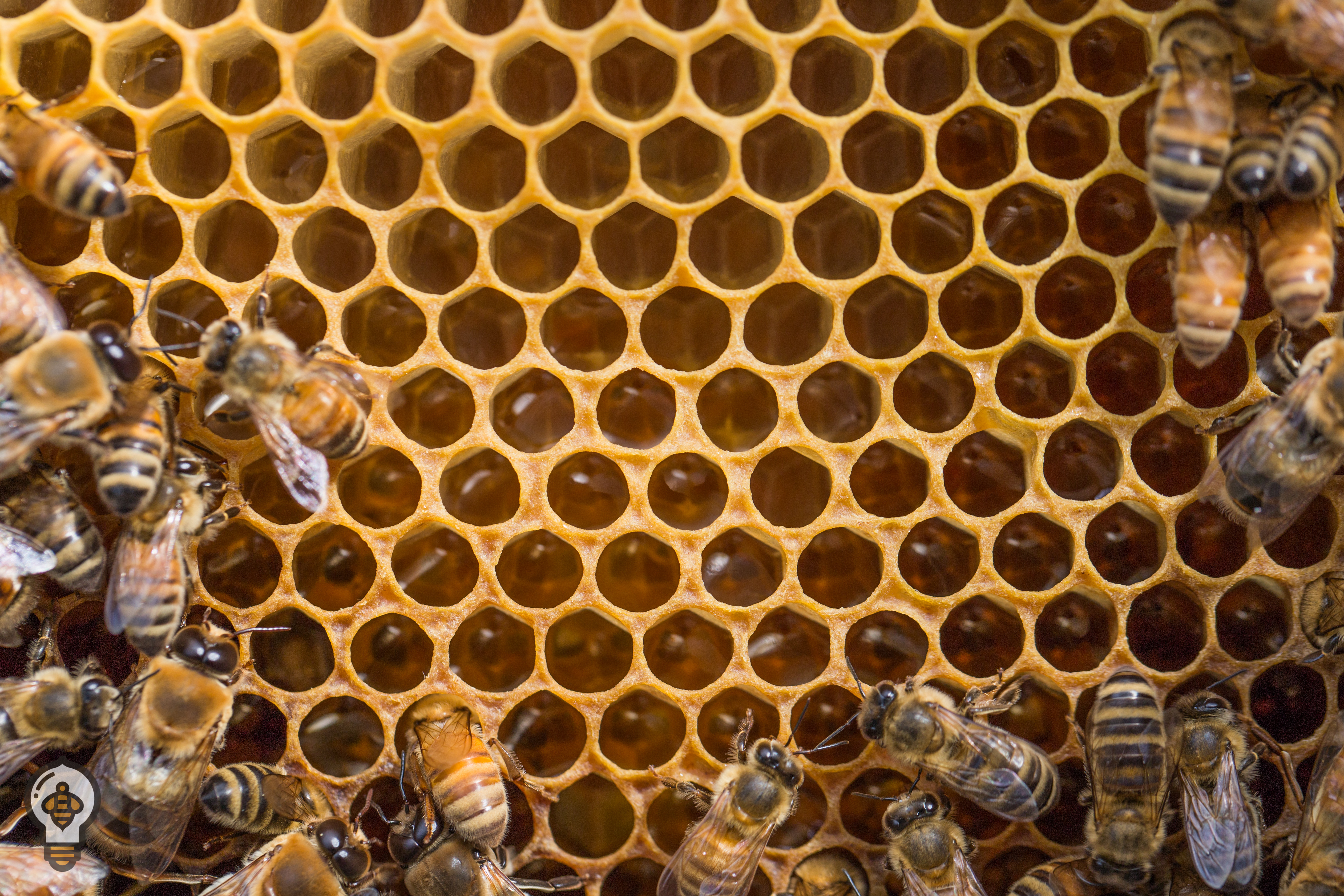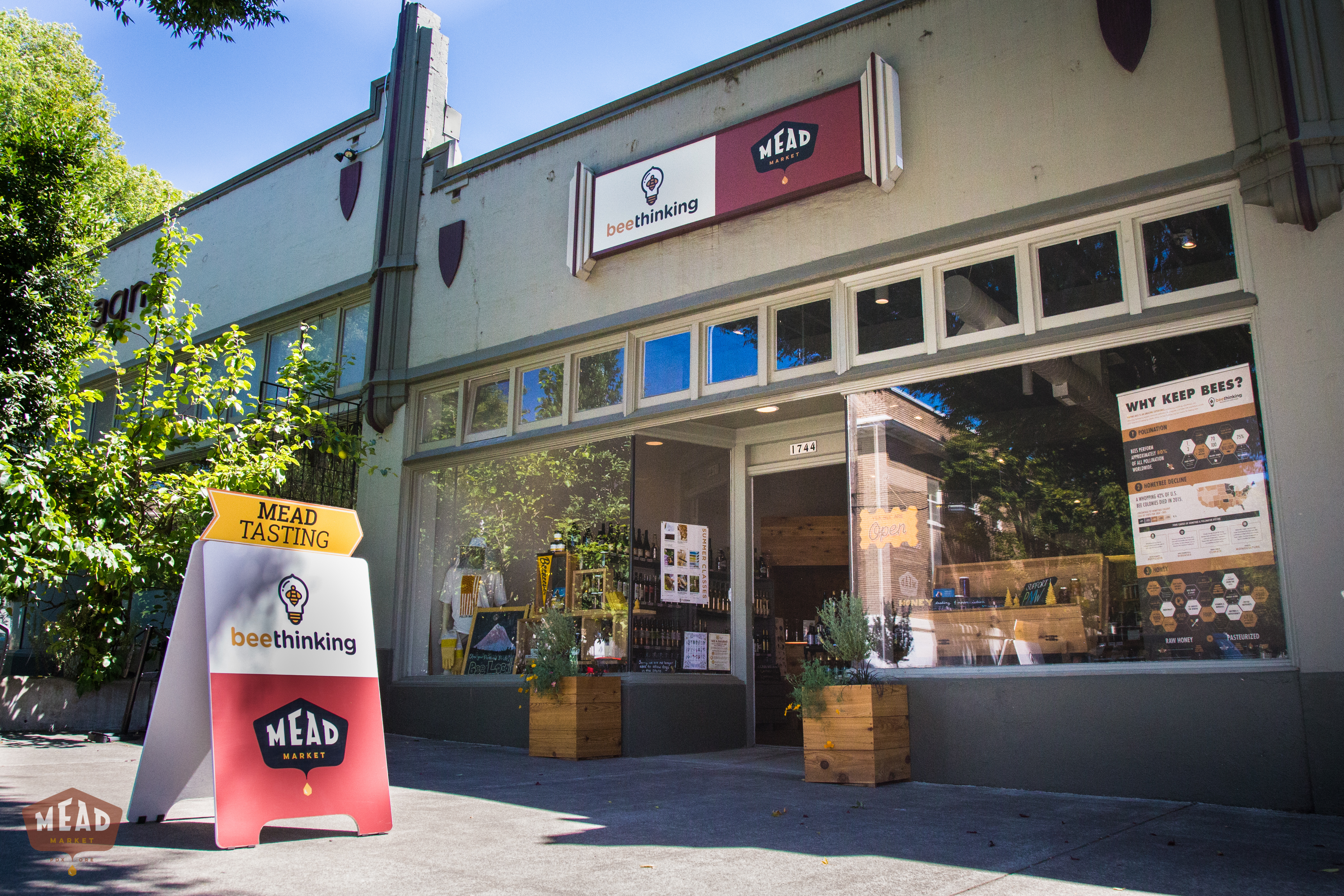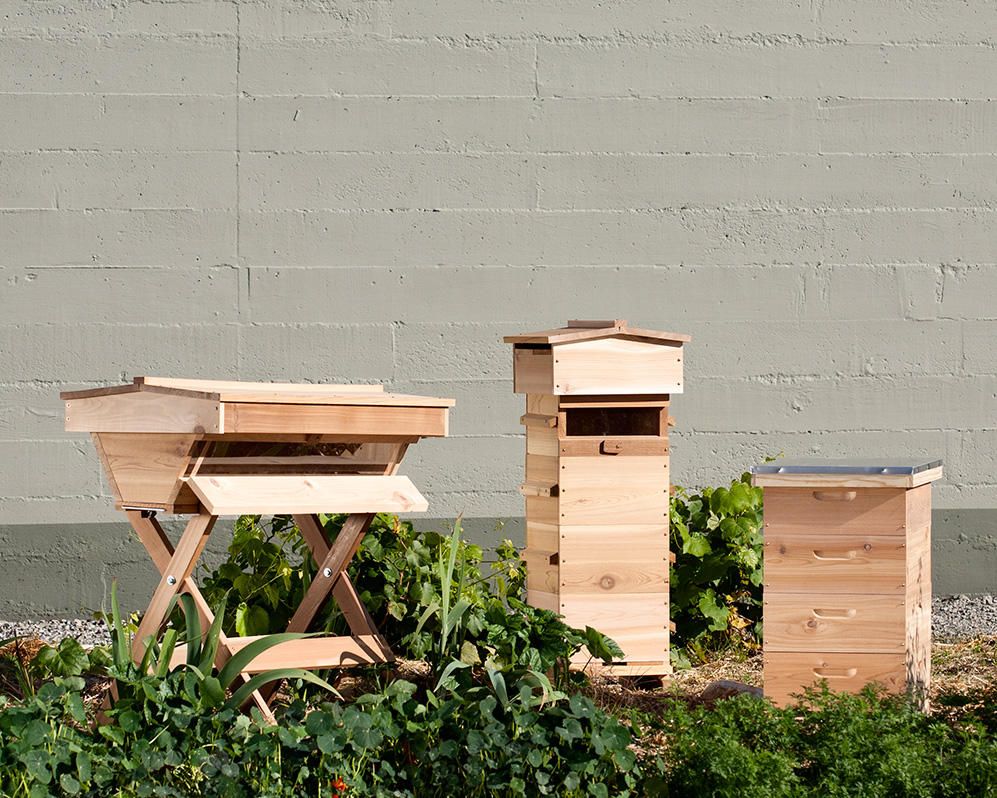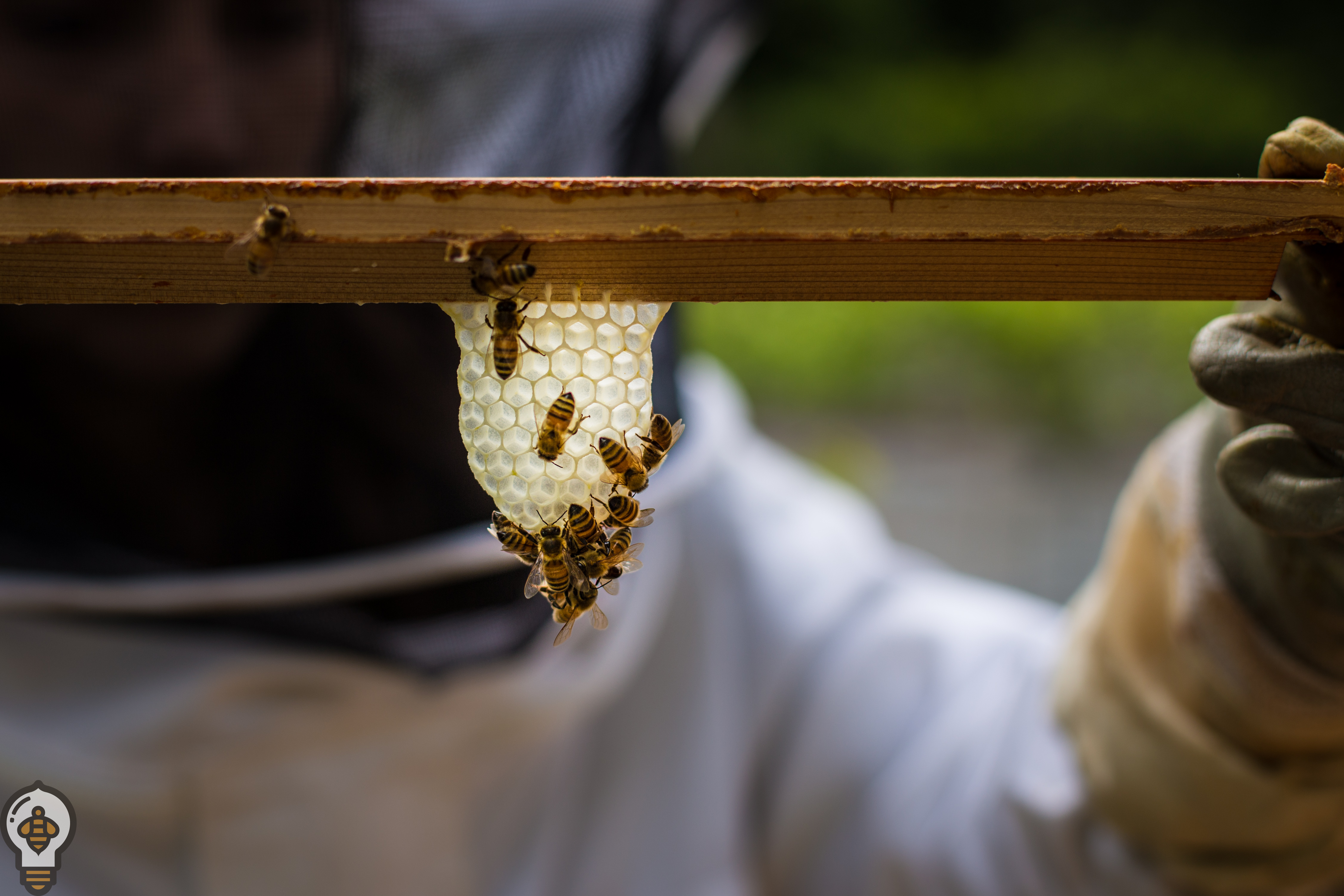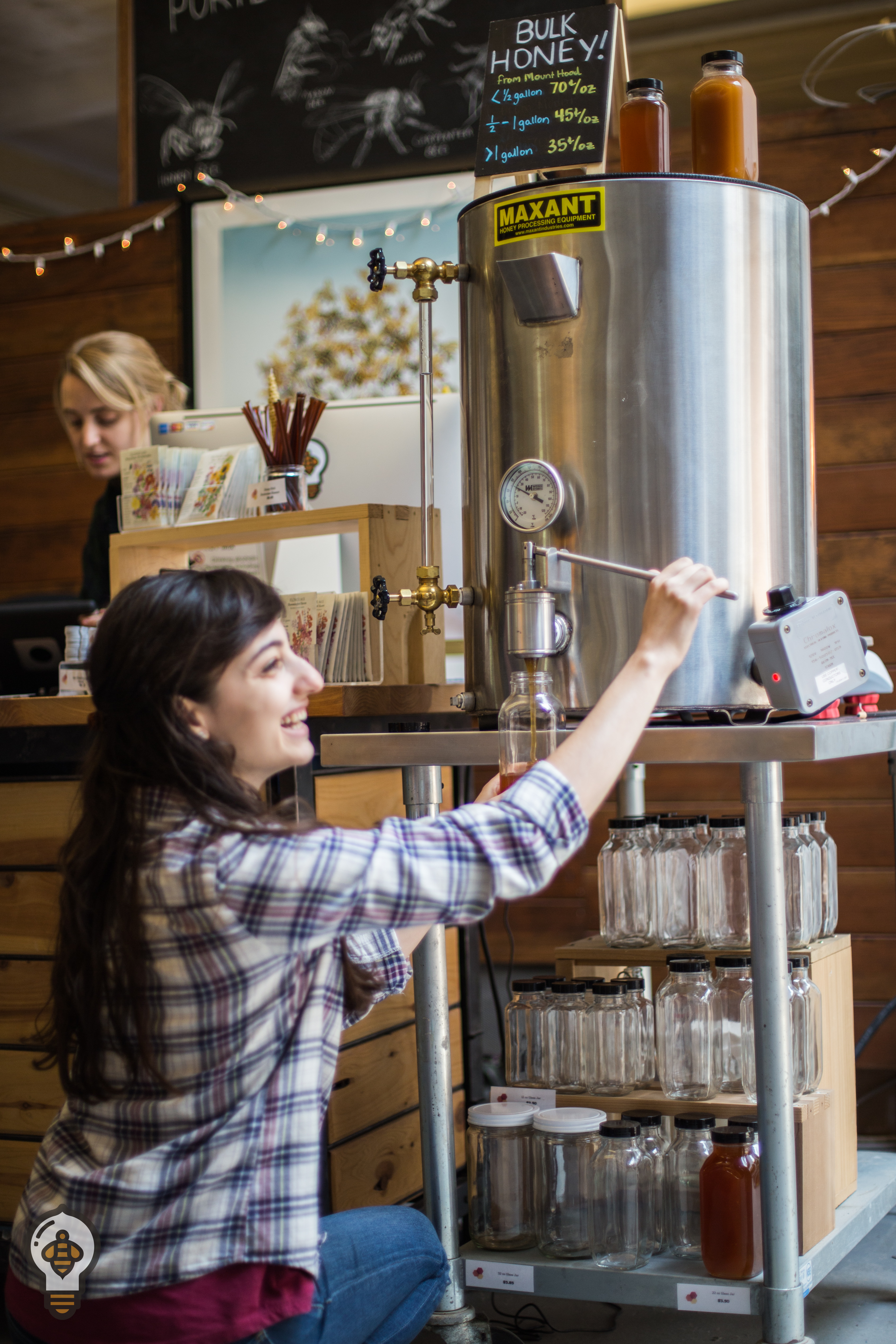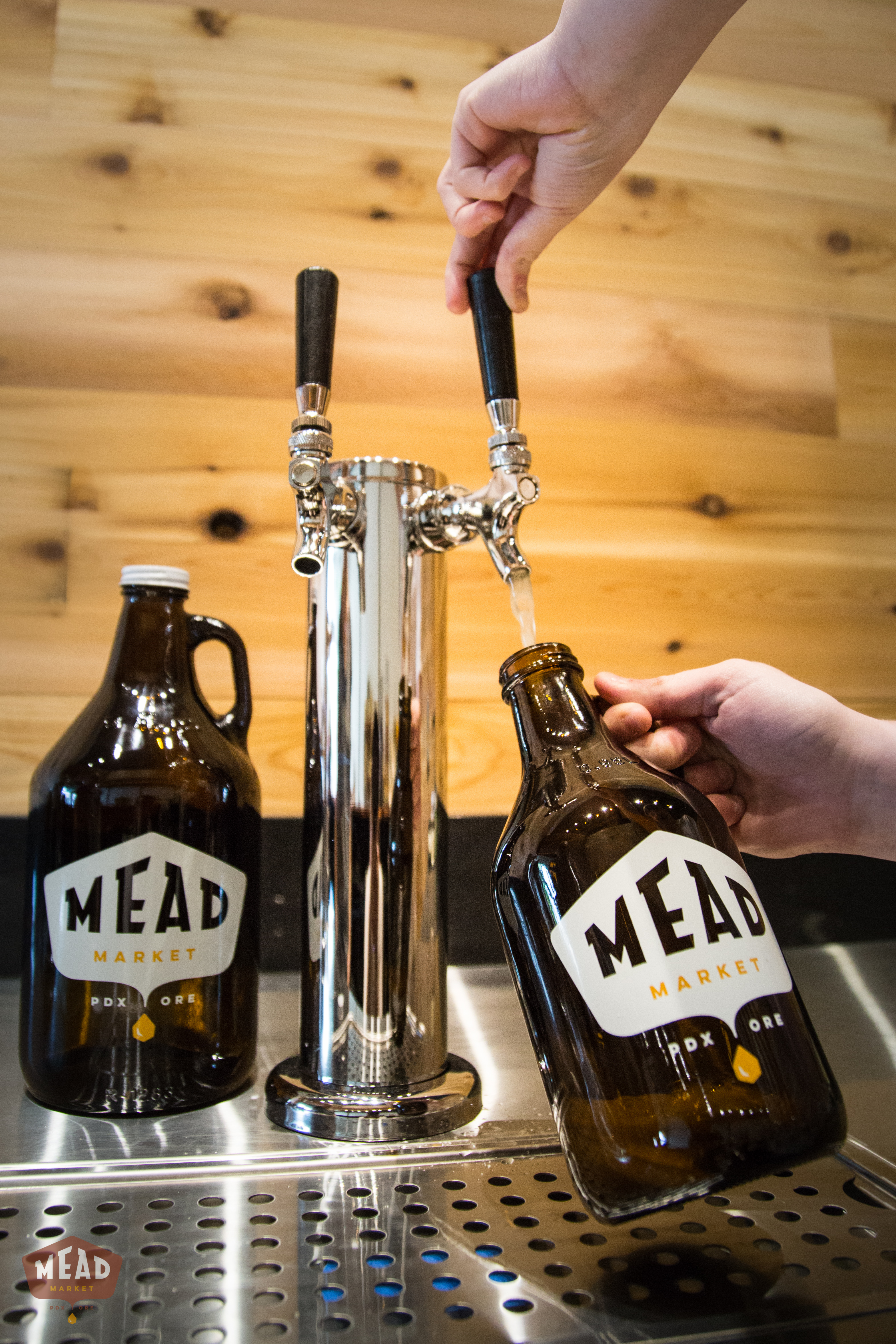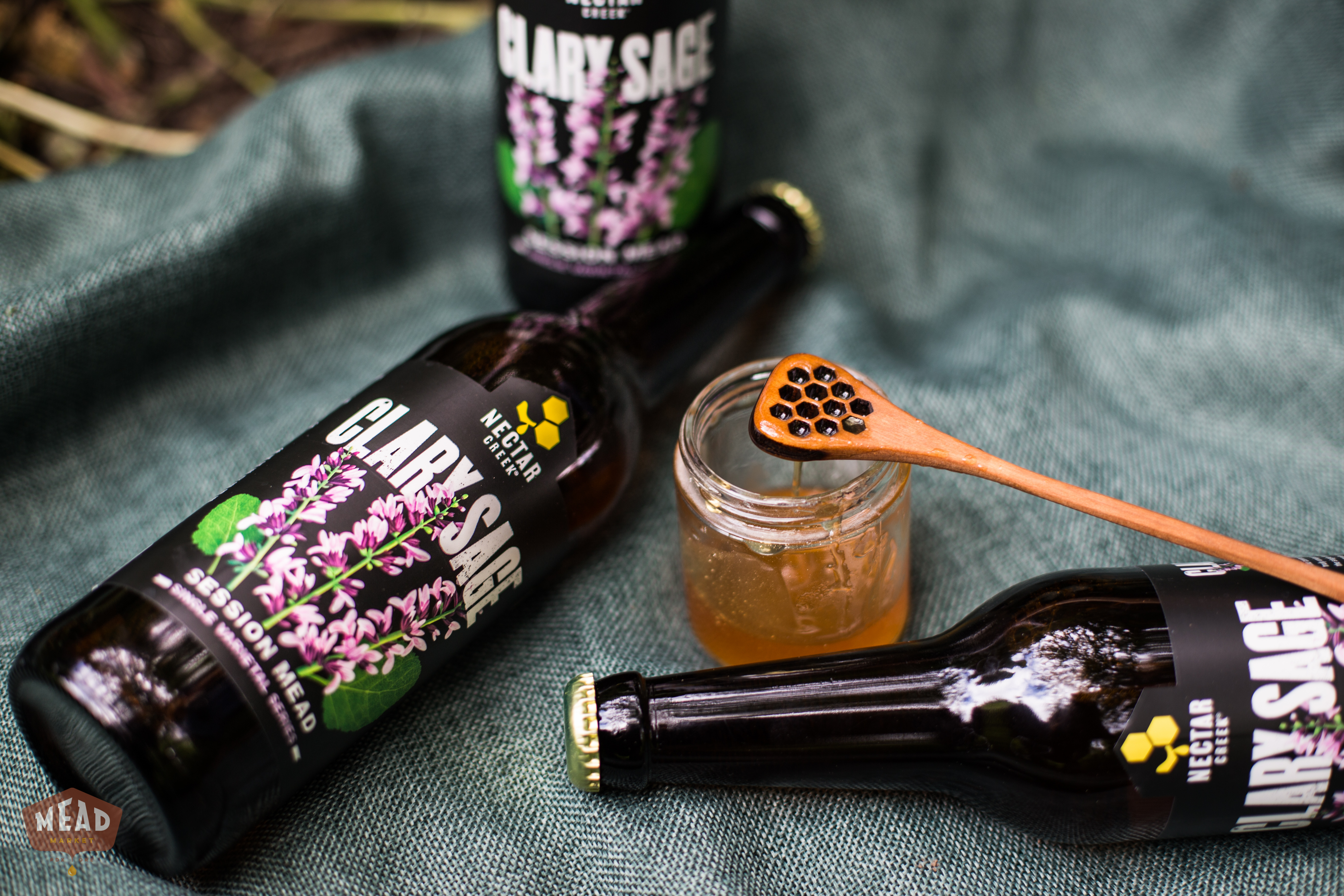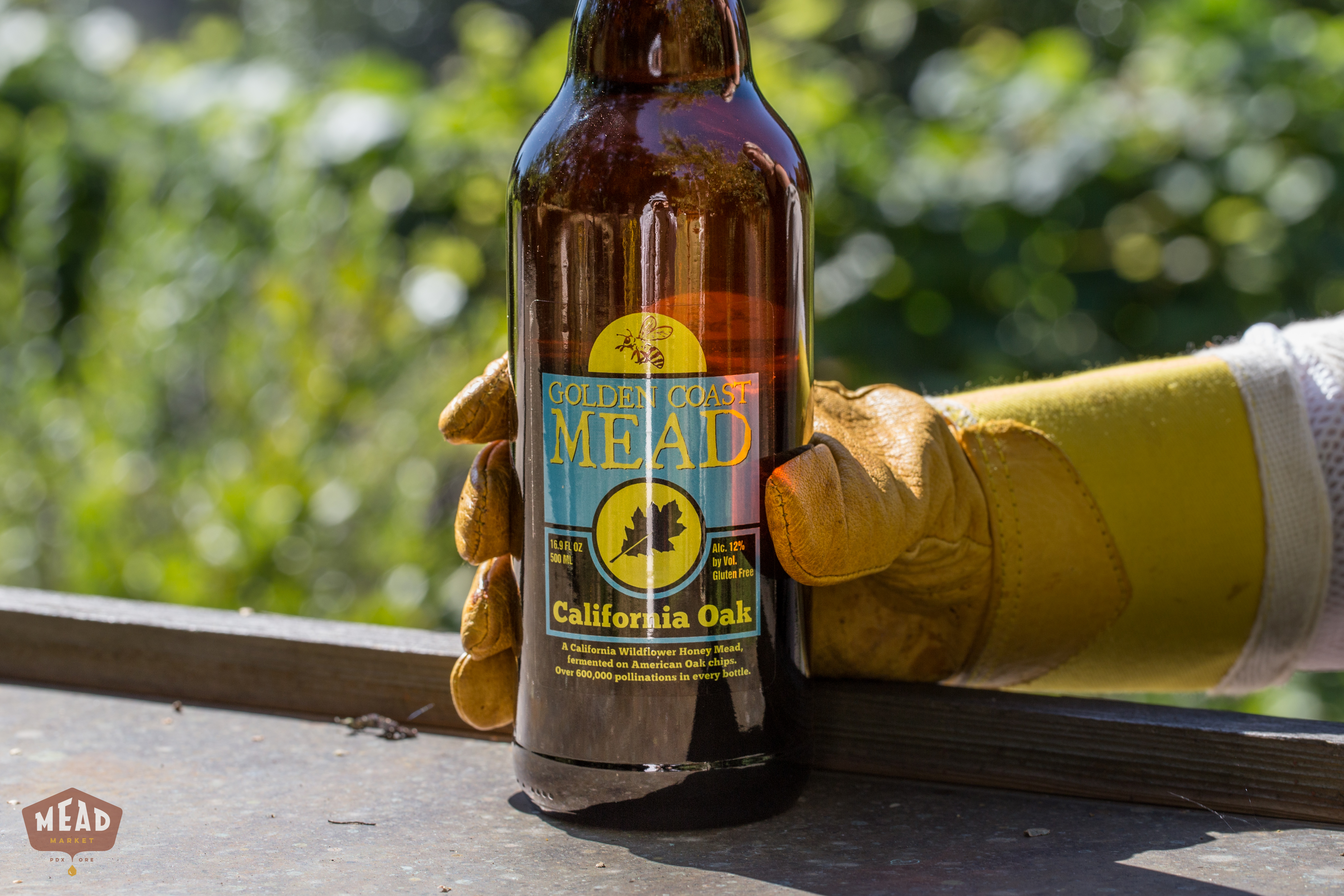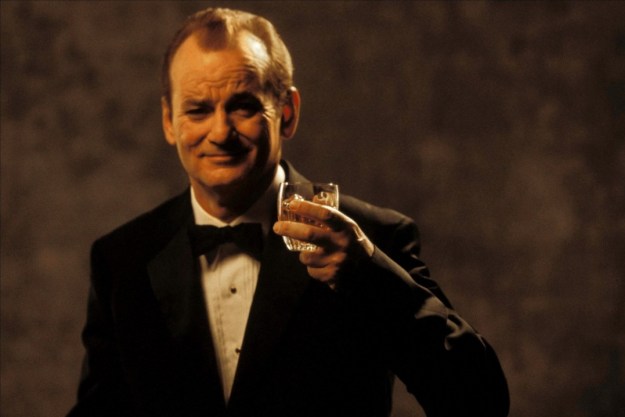- 1. Honey Comb
- 2. Bee Thinking & Mead Market
- 3. Bee Thinking’s Selection of Bee Hives
- 4. Honey Harvest
- 5. Honey Press at Mead Market, Portland
- 6. Mead Growlers at Portland’s Mead Market
- 7. Nectar Creek Session Mead
- 8. Golden Coast Mead
When a rogue bee found her way into the Portland, Oregon home of Matt Reed and Jill McKenna Reed, they never could have imagined that an encounter with such a ubiquitous insect would result in them becoming co-owners and co-founders of one of the best bee keeping shops in the country, Bee Thinking, which manufactures and sells three types of at-home-beehives, in addition to bee keeping accessories, products from honey and wax, and even mead.
It all started when, instead of shooing the errant bee out as quickly as possible, Reed noticed the insect was weak from his ordeal and, not wanting to see the little lady (90 percent of bees are female) suffer, offered up some honey, which the bee gratefully sipped. After regaining her strength, Reed released the bee back to the wild, feeling good about helping at least one bee survive, but never thinking he’d encounter it again. The next day, however, dozens of bees appeared at Reed’s door, all vying for entrance. Somehow the bees knew there was a food source inside. And that somehow was the bee Reed nursed back to health. The bee had told her friends there was food. And they came.
Related: Hives for Humanity
From that moment, Reed was, in his own words, “obsessed.” “I fixate on things,” he says. “I was transfixed by bees and thought it was the coolest thing ever. I went and bought every book I could find. I found a hive on Craigslist that had bees in it and put it at my parents house.” While there, Reed would monitor the hive, observing the bees’ comings and goings. And, once he realized there were many types of hives out there, he was hooked. So, he began blogging about not only bees, but his project to build his own hives from scratch.

But, it’s not all about profit for Bee Thinking. A major factor driving the interest for backyard and urban beekeeping is the growing awareness of colony collapse disorder. As Reed explains, “Major losses of honey bees started in 2006. At that point, some bee keepers had lost 70-80 percent of their colonies to this unknown cause. That got a lot of people interested in bees. They wanted to help. They didn’t know that bees were such an important part of their life. So, in one way, [colony collapse disorder] was bad, because a lot of bees died. But, also it’s good, because a lot more people know that they can’t live without pollinators–which leads to them paying a lot more attention to what they’re spraying in their yards and gardens. So, this has had a ripple effect on our environment. At least half of our customers got into bee keeping because of colony collapse disorder. And now they’re telling their friends and awareness is still spreading.”
“Having a mission based business was something we knew we wanted,” continues McKenna Reed. “With Matt working in IT and me working in wine–those are wonderful things to do–but at the end of the day, did we feel satisfied? Not completely. It’s nice to say, ‘Yes, we educated people.’ People are more aware. And the bees are being helped. I certainly don’t feel good about pollinator die-off, but we certainly feel better about making people aware for a living.”
So what can people who are interested in helping bees and possibly producing honey do if they live, like so many of us now, in an urban setting or an area where we don’t necessarily have the space to keep bees?
To start, you’d be surprised at how little space you actually need to keep bees. According to Reed, “A lot of people thinking about raising bees are like, ‘I’m going to buy property; I’m going to to set aside two acres of my yard for the bees.’ But bees really just need the space for their hive–which may only be two feet, by three feet, by four feet long. Not very big.” Bee Thinking has helped many customers in cities like Los Angeles and New York to keep bees in tiny backyards or even on rooftops and balconies.
As Reed says, “These are the perfect spots for them. There’s a lot of forage and pollen sources for bees in cities. There is a lot more diversity in flowers in cities than people realize. A lot of people imagine bee keeping as this pastoral thing that happens out in the countryside, but there are a lot more pesticides used in rural areas and a lot more mono-culture–where one type of plant is grown for miles. And in the city, there’s just a lot more food for them…like at the Brooklyn Grange.” Though counter intuitive, cities are often the best place for honey bees. A field of corn or soybeans in the Midwest is a dead zone for pollinators, whereas a thriving community garden in the Bronx is the perfect habitat for local bees.
And that’s another way you can help: garden. Even if you only have a tiny sliver of balcony, you can certainly grow flowering plants to attract and nourish your local community bees. Better yet, join a community garden and enjoy the benefits of both providing food for bees and some good-for-you vegetables for yourself.
You decided on a hive and chose your spot in your backyard or rooftop. Now where do you get the bees?

The coolest way to get bees, according to Reed is to, “catch a swarm of bees.” Yes, this does sound dangerous, but Reed made clear that during the swarming period, bees are uninterested in stinging. For the most part, the bees are simply exhausted and looking for a new home, and thus are quite docile. To find a swarm, join a swarm list. They’ll put your contact information on a geo-specific list, so anytime someone finds a swarm on their land that they don’t want, they’ll reach out to you for help. And according to Reed, you’ll look like a hero in the process.
A final, slower option, is to organically attract bees to your hive by adding a few drops of lemongrass oil. The oil mimics a pheromone bees release to communicate with each other, signalling to passing bees that your new hive could be their new home.
And what do you do once your bees start producing honey?
You could eat it, sure. Pairing honey varietals (honey produced mainly with the nectar of one flowering plant, such as raspberries) with cheeses and nuts is an excellent way to enjoy the fruits of your (and your bees) labor. You could also use the honey and wax in homemade skincare and grooming products. As McKenna Reed notes of beeswax and honey, “They’re really easy to work with, actually, beautiful to work with because they smell so good and are all-natural–anything from body scrubs to salves to lotions.”
The very best thing to do with your honey, however, is to drink it–in the form of mead.
Mead is “honey, yeast, and water,” says McKenna Reed, “It’s that simple. Mead is also the oldest fermented beverage. Beer drinkers like to argue against that, but there is every reason to believe, 
Related: From the Gods to the Table: Chef Guas and Mead
When Bee Thinking was just getting started McKenna Reed and Reed noticed that their sales were huge from winter through spring, but would drop off tremendously in the summer. In order to keep people coming back to their store (and also keeping people conscious of the plight of bees), McKenna Reed, who has a background in fine wine, decided to set up an onsite mead tasting bar and tap to prove to people that mead can be more than just a dessert drink. Now, with more than 120 types of mead on their shelves, Bee Thinking and Mead Market are set to be the premier mead retailer in the Pacific Northwest.
And tasting the selection at Mead Market will open a whole new world of alcoholic beverages to you. From stereotypically sweet, historic, Eastern European meads like Viking Blod and GL Dansk Mjød, to spicy Ethiopian style mead, to session mead (which is low in alcohol and drinks almost like a beer) from Nectar Creek Meadery, to 9 percent alcohol fruit sours, like those from Fringe Meadery in Oregon. When it comes to the sheer variety of styles and tastes, McKenna Reed doesn’t hesitate to say, “Mead is like a wine, but not. It’s like a beer, but not. It’s a whole other dialect of a language you could be speaking.” We’d be happy to learn that dialect.
And finally, what about the cost? Are bee keeping and mead making hobbies everyone can afford?
“Bee keeping can be as expensive or as cheap as you want it to be,” says McKenna Reed. “So, if you build your own hive and catch your own bees, it’s a pretty cheap hobby to start. But, we’re human. We like bells and whistles. We like making things a little harder than they necessarily need to be,” referring to beginning bee keepers who go out and buy all the gears and accessories they can get their hands on. But, when it comes right down to it, the cost is not prohibitive. “We see both ends of the spectrum,” McKenna Reed laughs, “but, there’s something for everybody, for sure.”
Be sure to check out Bee Thinking for more detailed information on their hives, honey products, and educational classes. If you’re in the Portland area, stop by their shop for a mead tasting during Mead Market’s grand opening, October 1-2, 2016 and buy a bottle for yourself.
